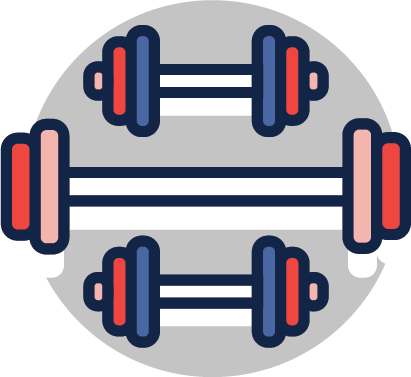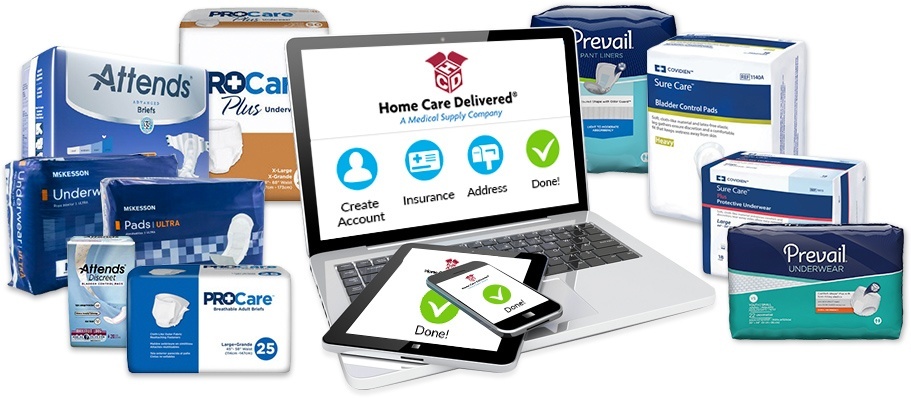Yes, You Can (and Should!) Exercise with Incontinence
The more you know about incontinence, the more successfully you can manage it.
This post was reviewed by our Director of Clinical Excellence and Oversight.
Whether you exercise because you love that sweaty runner’s high, or because you know it will improve your overall health, rest assured that with the right products and preparation, you can run, walk, swim, cycle, or rock a downward-facing dog in dry comfort.

You Are Not Alone
According to the National Association for Continence, more than 25 million Americans experience incontinence, and too many suffer in silence for years before seeking help. That’s because some people may feel embarrassed even to tell their doctor they are experiencing incontinence. Or they may think incontinence is a natural part of aging (it’s not!) and that there’s nothing they can do about those annoying and untimely leaks. Sometimes people fear that the only way to get their life back is through an invasive procedure, like surgery (again, it’s not).

There are two primary types of incontinence. Stress incontinence occurs when pressure or stress on the bladder causes you to leak. It can happen when you laugh, pee, or exercise. It’s caused by a weakening of the muscles that control the bladder and can be due to obesity, childbirth, prostate surgery, and other causes. Overactive bladder is characterized by a sudden, intense need to pee, often several times at night, followed by a release of urine that you can’t control.
Incontinence can also be a sign of something else, for example a neurological condition like multiple sclerosis, diabetes, an enlarged prostate in men, or hormonal changes in women. That’s why it is important to speak to your healthcare professionals when you start to experience incontinence issues.
Muscles You Never Knew You Had
Kegels—pronounced KEY-gulls—are a type of exercise that strengthen the pelvic floor, the muscles that support the bladder, and nearby organs. So basically, they tighten the muscles that control the flow of urine. Although there are variations for men and women, the basic Kegel is easy and is done like this: (Note: If you’ve just given birth or had surgery, be sure to ask your doctor if it’s OK to do Kegels right now.)
- Sit comfortably, close your eyes, and visualize the muscles of the pelvic floor.
- Tighten and hold for several seconds; it will feel like the muscles are rising.
- Release and rest a few seconds.
- Repeat up to 10 times.
Yes, You Can (Exercise and Get Strong) With Incontinence!
Whether you live to exercise or exercise to live, movement is essential for good health.
Ideally, your exercise routine should include a variety of moves that accomplish four things.

Build strength by using free weights, weight machines, or body weight
Control weight by building muscle

Increase endurance by brisk walking, jogging, swimming or cycling
Improve balance and flexibility

If you use gym equipment, choose machines like the treadmill or elliptical that don’t put pressure on the pelvis. And try to avoid lifting heavy weights or doing body-weight exercises like jumping jacks, that bounce or push on your pelvis. Although squats can sometimes contribute to a leak, they can actually help strengthen your pelvic floor muscles so you might consider doing these with the right protection in place.
Some people like to keep a bladder diary that logs what they eat and drink, as well as the types of physical activity they try. That way they can analyze the impact of all their daily activities on their continence. For more about the benefits of exercise on your health, read Two Tips for Health: Start Moving and Keep Moving!
A Few Tips for Exercising with Incontinence
Here are some helpful tips to keep you dry and in control while exercising:
Avoid a big meal before your workout, as food puts pressure on your bladder and pelvic muscles.
- Empty your bladder before you start to exercise.
- Limit fluid intake but be sure to stay hydrated while you’re working out.
- Wear black pants in fabrics that wick away moisture.
- Use protective pads, underwear, or other protection as needed to absorb any leakage. Heads up ladies—incontinence pads are different from menstrual products because they do not get soggy when wet. Be patient with products. It may take a couple tries before you find the ones that work best for you.
“Incontinence does not mean you’re permanently benched! In fact, physical activity is one of the best things people with incontinence can do for themselves.”
Consume with care
The saying that “80% of the results in the gym take place in the kitchen” also applies to bathroom accidents. When and what you drink can have a big impact on your continence and comfort.
One caveat to drinking more is that you’ll want to go easy on caffeine-containing beverages like coffee, tea, and soda because caffeine is known to increase bladder activity. Alcohol and artificial sweeteners can be a problem, too, as well as milk, tomatoes, citrus, chocolate, and spicy foods that can irritate the bladder.

“You might think that drinking less means less chance of an accident. In fact, limiting fluids can actually make incontinence worse.”
HCD Wants to Help Keep you Active and Dry
With some changes in habits and the right products, many people manage incontinence quite well on their own. But if you feel like leaks and accidents are more than you can handle, and are making it impossible to stay active, make an appointment with a member of your healthcare team. There are a variety of treatments out there, but it can take some work to identify what works best for you.
Meanwhile, the Home Care Delivered customer service experts are ready to discuss incontinence products and assist with your order at 866-904-0815 or you can enroll online through our Online Enrollment secure website. At HCD, we’re all about practical solutions and peace of mind, like delivering insurance-covered products right to your door in discreet packaging.
Enter your phone number on the bottom left of the screen and one of our team members will give you a call. Or feel free to call us directly and enroll today. We know incontinence is challenging and we’re here to help.

Get Incontinence Supplies Online With Medicaid
No Credit Card | Fast Delivery | 100% Discreet

Disclaimer:
Unless otherwise noted, the recommendations in this document were obtained from the sources indicated. Be advised that information contained herein is intended to serve as a useful reference for informational purposes only. HCD cannot be held responsible for the continued accuracy of or for any errors or omissions in the information. All trademarks and registered trademarks are the property of their respective owners.
